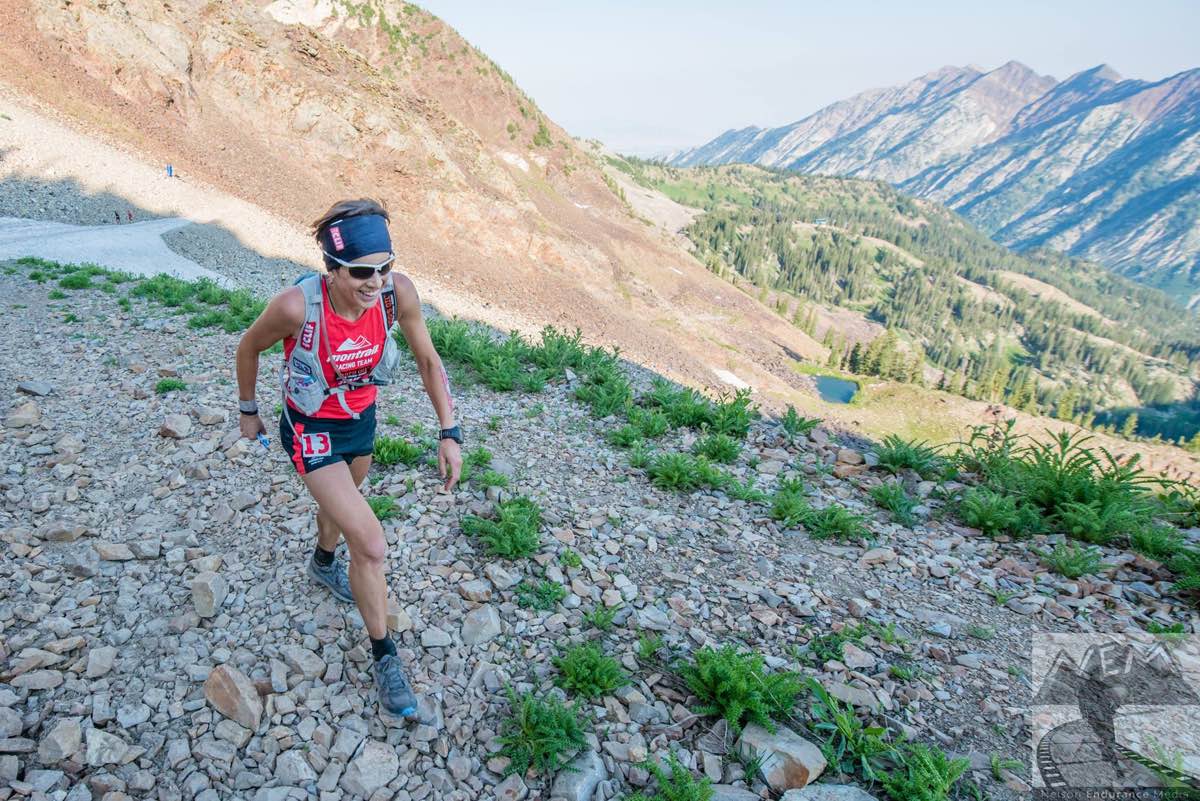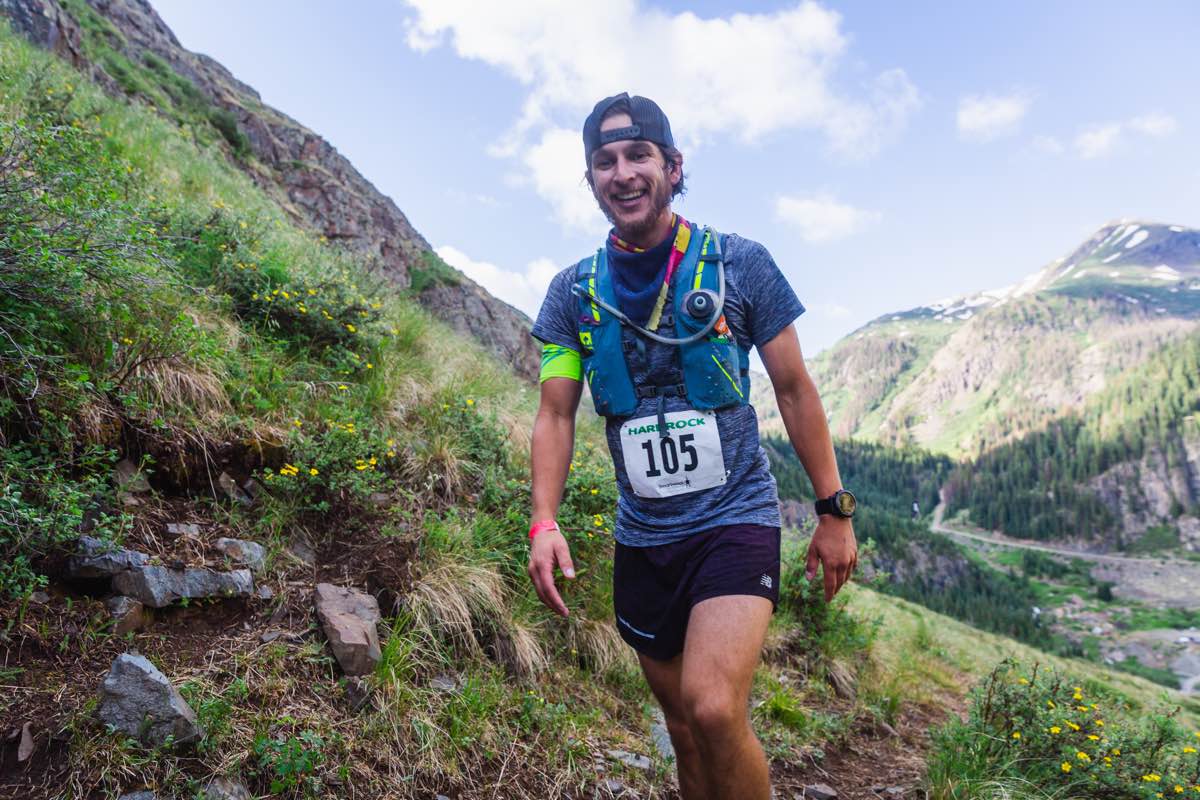Living in a place that’s flat shouldn’t negatively affect our chance of success in any race, including events with significant slopes. Though vertically toughened legs are necessary, they don’t need to be built in the mountains. Incorporate these modalities into your next training cycle and you’ll forge a steep-proof body.
Treadmill Hiking
Whether you love them or hate them, if you live in a place without hills, a treadmill is an effective tool. “The advantage of treadmill hiking is that it gives us the mental and physical training of grinding away at an uphill for a long time without a break,” says two-time Western States 100 winner and Sharman Ultra coach Ellie Greenwood. “This is something a lot of people can’t get, even if they live in an area with some small rolling hills. This helps flatlanders appreciate that powerhiking is not quitting and is an efficient way to tackle a long climb.”
Many of today’s treadmills incline to 15% or more. Adjust the grade based on your strength and workout duration to optimally develop efficient and powerful uphill hiking form and pace. Greenwood suggests starting your powerhike training with 20 to 30 minutes and ultimately working up to 90 minutes. “The aim isn’t to run,” Greenwood says. “But to work on leg strength and become a faster hiker by maintaining a slightly faster uphill pace for longer periods.”
Use these guidelines as you progress in fitness:
- If you’re new to steep hiking, start with 5-minute cycles of 10%, 12%, and 15% inclines, adjusting the treadmill’s speed to sustain a reasonable effort. Hands on quads are fine, but avoid using the handrails.
- Strong athletes that are using a treadmill that elevates past 15% should alter the grade between 15% and 20% every 5 to 10 minutes for variety, slowing pace as the grade steepens. Again, avoid using the handrails.
- To increase difficulty, don a weight vest or weighted pack.
- Finally, Greenwood says, “Add 30 minutes of powerhiking at the end of a long run to practice hiking on legs that aren’t fresh.”
Unfortunately, uphill treadmill hiking doesn’t prepare us for quad-crushing downhills. Read on to find out how to supplement your training regime with leg-toughening workouts.
Stair Running
Unlike Stairmasters and treadmills, staircases provide an opportunity to both ascend and descend. “Find stairs in office or apartment buildings, use bleachers at a stadium, or seek out shopping-mall parking garages,” says Greenwood. “Be creative and ideally locate as tall a building with as many flights as possible. Even if you only have access to two or three floors, that’s better than nothing.”
Similar to treadmill workouts, Greenwood suggests starting with 30 minutes of stair repeats and building to 90 minutes, keeping hands off any supports, and pushing off the thighs as fatigue sets in. She adds that wearing a good pair of cushioned shoes will keep you happier if the stairs are concrete.
- Hike or run up the stairs, depending on your fitness level and purpose of the workout, but always jog or run down to accentuate eccentric loading, the point when the leg muscle is severely stressed during use due to the forces of deceleration (or braking) and impact absorption, of the quads.
- In a tall building, mix things up. Run long stair repeats to improve stamina and endurance and reproduce extended descents. Dash up only a few flights at near maximal effort to improve speed and power.
- Alter your stride pattern. Instead of walking or running up one step at a time, try taking two or three steps at once.
- Practice with gear. Add water, food, and whatever else you would carry during the race.
- “Stair repeats are a good mental workout as they’re so repetitive,” says Greenwood. “It gives a flatlander an idea of the amount of plugging away that’s necessary to cover very little ground. On race day they might be moving super slow but they’ll now understand they’re still doing well!”
Strength Work
According to Dr. AJ Gregg, a Certified Strength and Conditioning Specialist at HYPO2 High Performance Sport Center in Flagstaff, Arizona, gym exercises like these below are key to injury prevention and should be used to supplement hill climbing and descending development.
- Step-ups: “These will assist in building climbing strength,” says Dr. Gregg. “The box [you step onto] must be high so it is challenging—roughly 18 inches. Use a counterweight and high sets (8) and repeats (8 to 12) to boost strength and endurance. Your effort level should be 60 to 70%.” Watch this video which demonstrates dumbbell step-ups.
- Single-leg squats: “Focus on slow down, pause, then fast up,” emphasizes Dr. Gregg. “The knee should flex to 110 to 120 degrees. (For reference, a straight leg is 0 degrees and a fully bent knee is roughly 135 degrees.) Do high sets (8) and repeats (8 to 12), building to 20 reps per set.” This video shows single-leg squats.
- Box squats and depth jumps: These exercises do double duty by preparing us for both uphills and downhills. Dr. Gregg suggests that the athlete have experience with plyometrics before undertaking the box squats and depth jumps. Start very slowly, ensure landing form is correct, and build up to a volume of 50 to 75 reps. Once you perfect the movements, the jumps should include a combination of hard stops and fast running upon landing. This video demonstrates proper landing form, while this video shows depth jumps.
Long Runs
“For someone coming from the flats, the best way to combat that big-elevation race is to get out and run your long run,” says McMillan Running coach and two-time Hardrock 100 finisher James Bonnett. “Creating a big aerobic base during your building phase will help to create a strong foundation for your race and allow you to handle the terrain easier.”
Several beneficial physiological adaptations occur by running farther:
- The body becomes proficient at burning fat, its optimal fuel source.
- Muscle and liver glycogen, the major forms of stored carbohydrates in the body, are more effectively amassed and utilized.
- The size and number of muscle capillaries and mitochondria, the blood vessels and cellular factories that facilitate aerobic energy, increase.
- VO2 max, the maximum amount of oxygen an individual can use during intense exercise, increases. The more oxygen we can utilize during hard climbs, the more powerful we’ll be at ascending.
“It is important to gradually increase your flat long run’s mileage, so that it better lines up with the time you’d expect to be on your feet with the added elevation of the course,” says Bonnett. “For example, a 20-mile training run with significant elevation gain might take four hours. On flatter terrain, however, your ‘20-mile training run’ may become something longer in distance in order to maintain that same time on feet. I typically wouldn’t recommend flat long runs over 4 to 5 hours to prevent injury and diminishing returns.” Bonnet points out that several runners have succeeded in mountainous races on training diets high in volume and low on vertical, like Florida’s Mike Morton and Nebraska’s Kaci Lickteig.
Integrating Intensity, Coordination, and Strength
When we run or hike up a hill, our heart and respiration rates jump and our legs burn from exertion. On flat terrain, we can also achieve these biological reactions. Intense and dynamic training teach us to run or hike harder for longer by improving:
- Metabolic pathways that help us store and use fuel sources more efficiently;
- Biomechanical advantages that reinforce proper running form and range of motion;
- Recruitment and growth of fast-twitch muscle fiber;
- Lactic acid buffering capability; and
- Oxygen uptake from the blood once it reaches the muscles.
These kinds of workouts are hard and fast. Repeats should last between one and six minutes. Heart rate will range between 94% and 98% of maximum. Because we can only spend a short amount of time at these speeds, a recovery jog is required between repeats. “My favorite workout like this consists of a hard 2-minute effort followed by a 1-minute jog/walk rest,” says Bonnett. “As the athlete progresses, the hard effort run time increases, but the rest period remains the same. Ultimately, the recovery period will include lunges which will increase the difficulty of the workout and prepare the runner for powerhiking.”
Consider a Dress Rehearsal
Carving out time to do a long run on the race course, at least once or twice during the training cycle, is the ultimate way to dial in gear needs (like poles, shoes, and packs), grasp a true sense of the terrain (landscapes always look different in person), and inspire you to continue with these suggested routines.
Call for Comments (from Meghan)
- Have you successfully trained for a hilly or mountainous race in a flat area? If so, what do you think were the key elements of your training?
- Stairwell runners and treadmill powerhikers, unite! If you are a flatlander, do you already use any of the techniques described in this article?


